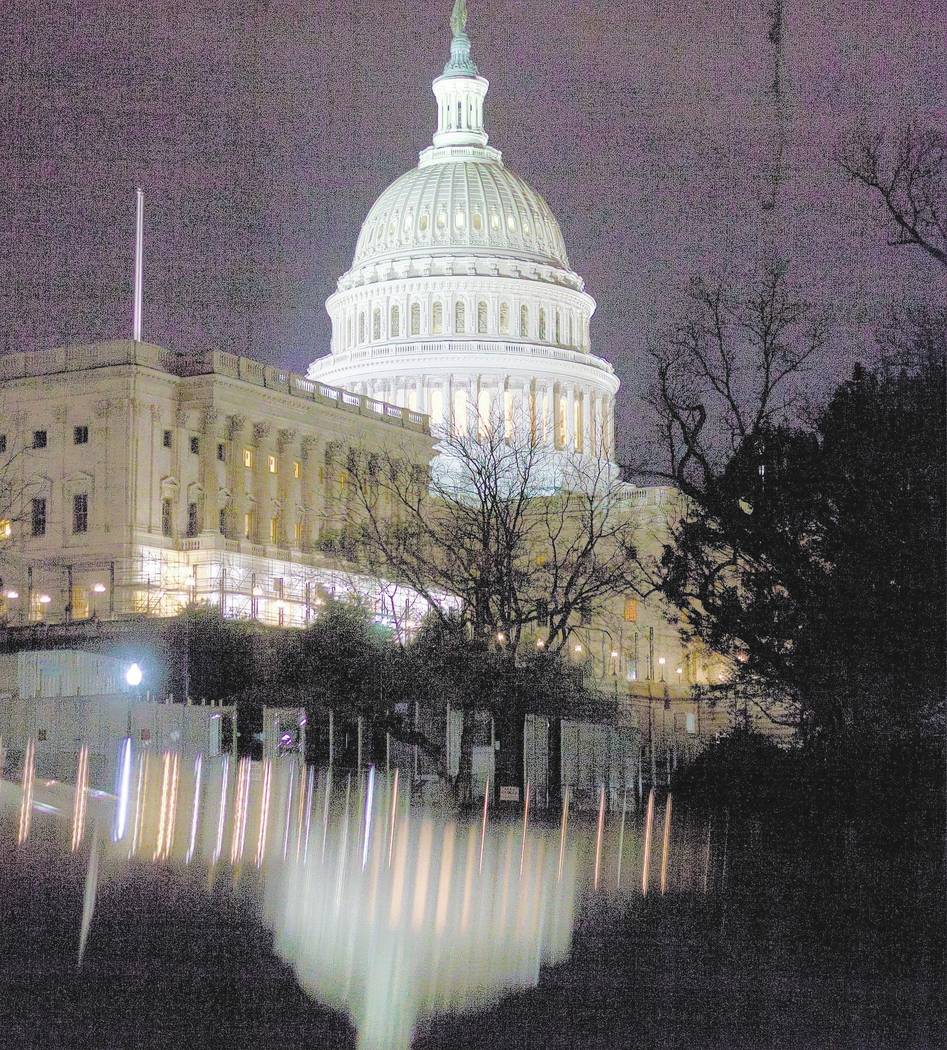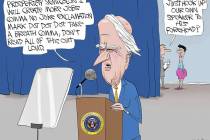COMMENTARY: Don’t bother waiting for a revivial of the political center
I wasn’t a big fan of PowerPoint presentations until I saw the one Tom Davis uses to depict some depressing trends in American politics. It shows polarization, which is no surprise. What’s striking, though, is how he represents it graphically.
Davis was a seven-term Republican representative from northern Virginia and twice ran the party’s congressional campaign committee. His knowledge of U.S. politics is encyclopedic. In 1969, his best friend at Amherst College, David Eisenhower, took him to Washington to meet Eisenhower’s father-in law. That was President Richard Nixon, who was so impressed that he offered Davis a job as a White House intern.
The PowerPoint puts this month’s party-line Senate vote to end filibusters against Supreme Court nominees into historical perspective. And it shows that the partisanship the vote represented flows from long-term trends that aren’t likely to be reversed.
To demonstrate, Davis devised an instructive formula for Congress: Take the voting record of the most liberal Republican and the most conservative Democrat and then see how many members’ voting records fall between them. That would identify moderate lawmakers to use as building blocks for bipartisan coalitions.
In the House of Representatives in 1982, 344 members fell into this in-between category. That was 79 percent of the legislators. In 2002, there were 137 moderates, or 31 percent. By 2014, a grand total of three House members were neither strikingly liberal nor strikingly conservative by Davis’ measure.
The widening gap in the House can be partly attributed to factors such as gerrymandering to create heavily partisan districts, and by residential patterns that tend to cluster like-minded people in the same communities.
But those factors can’t explain the fact that patterns in the Senate are similar. In 1982, 58 Senators had voting records that fell between the most liberal Republican and the most conservative Democrat. In 2002, that number was down to seven. By 2014, there were none.
One parallel trend is the vanishing of split-ticket voting.
In 2016, all 14 of most competitive states with Senate races voted the same way in the presidential and Senate contests. That wasn’t always the way American voters behaved. Even while Lyndon Johnson led a presidential landslide for Democrats in 1964, Republicans won Senate seats in such Democratic strongholds as Delaware and Massachusetts. Democratic Senate contenders overcame President Ronald Reagan’s 1984 landslide in states where that would be almost unthinkable today: for example, Alabama, Nebraska, Oklahoma and Tennessee.
Davis, now director of federal government affairs at Deloitte LLP, said that today’s divisions have been widened by cable television, where the premium is on the negative and the other guy is a bum, as well as by political social media where conservatives gravitate to right-wing sites and liberals to left-wing ones. The campaign-finance system, freed from legal spending restraints that existed in the past, is also a factor. There is little prospect for changing any of these.
Cultural change, driven partly by economics but also by education, matters too. Clinton carried all 17 states (and D.C.) where there is a higher percentage of voters with advanced degrees than the national average of 10.3 percent.
On a map of the national county-by-county vote, Democratic blue dominates the coasts with red almost everywhere in-between except for the blue spots representing big cities and university towns.
Alienation and anger have also fed polarization. Turnout was down in 2016 from four years earlier, and down a full 10 percent from 2008, when President Barack Obama was first elected. Voters in 2016 told pollsters they thought Clinton was superior to Trump in judgment, experience, and caring “about people like me.” But Trump was considered the more likely agent of change, and change won.
The anger this reflects shows no signs of abating, Davis said, which he thinks augurs poorly for Republicans in next year’s congressional elections.
He’s not optimistic about the environment changing anytime soon. “Sometimes you have to hit rock bottom,” he said. “We haven’t yet.”
Al Hunt is a Bloomberg View columnist.




























